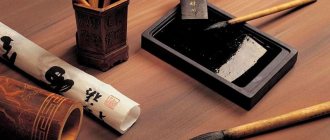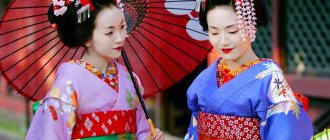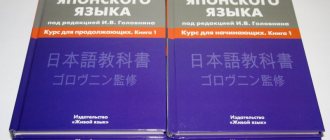Tatami is a traditional Japanese piece of furniture that has been used to cover floors in homes, temples, and official institutions since ancient times. The Japanese consider tatami to be an integral part of their home. In modern Japanese homes, tatami cannot be found everywhere, but in the homes of the Japanese, who adhere to the beliefs and culture of their country, such flooring is a must.
Story
Japanese tatami is made from igus (a type of reed) and filled with rice straw. Modern options are made with artificial wool. Long edges are decorated with fabric. The production process is not simple, so the majority of workers are men.
The prototype of tatami in Japan is ancient mats, samples of which date back to the 8th century of the current era. These were heavy and small, but elegant objects.
In Japan, the term "goza" used to be used to refer to woven flooring. Such items were considered luxury and were intended only for the use of the aristocracy. Over time, traditional bedding began to be used to decorate not only the main hall for receiving guests, but also all other rooms; they were adapted for night rest. Since the end of the 17th century, types of publicly accessible tatami have appeared. Since that time, the products have been used by commoners.
Mats - an element of a traditional interior
Around the 18th century, flooring reached rural houses and provincial settlements. Mats have become so firmly established in Japanese everyday life that even the strong Western influence of the 20th century did not diminish the people’s love for them.
In the last decade of the last century, floors in Japan began to be decorated with parquet. The fashion turned out to be short-lived; soon traditional straw mats regained their former popularity. It mainly produces household products; there are small companies engaged in hand weaving. The price for these is much higher than factory ones, but interest in them does not decrease due to convenience and benefits. In particular, they (like carpets) correct the poor sound insulation of modern houses.
Exist:
- Kema (95*191 cm, used in Kyoto);
- Ainoma (91*182 cm, Nagoya version);
- Edoma, Kantoma (88*176, popular in Tokyo).
Traditional mat with edging
Tatami and a little history
Originally, tatami was created in the 8th century AD. The first products were not too large and heavy, they were particularly light and elegant. In Japanese there is a hieroglyph that means the word "tatami". This hieroglyph in translation is interpreted as “to fold or fold.” During the Heian era, similar decorative elements could be seen in the homes of aristocrats. Some people mistakenly believe that the Japanese use tatami only as floor coverings. In fact, tatami is used as a sleeping area, as well as for sitting or relaxing.
From the 12th to the 17th centuries, these coatings began to appear everywhere in the homes of people who belonged to the highest circles of Japan. By the number of tatami in the house one could easily determine the welfare of any family. In the 17th century, these products became available to ordinary citizens. A little later, a century later, mats began to appear in the provinces and villages. Even Western influence in the 20th century could not displace tatami from the Japanese interior.
In the early nineties, parquet flooring became popular in Japanese homes. Nowadays, tatami is again regaining its former glory as a sign of good taste in Japanese interiors. Products are produced at . In Japan, there are also small factories where tatami are made by hand to order, and their cost is significantly higher than copies for mass sale.
Floor coverings have found new use due to poor sound insulation in modern homes. The Japanese lay tatami on the floor not only for the sake of beauty, or as a tribute to tradition, but in order to reduce noise effects in the building.
As before, products are made from environmentally friendly materials. In addition to flooring, these interior items can serve as a pillow, mattress, and they can also be transformed into a chair, bed, or coffee table. Because the Japanese love to give hidden and sacred meaning to simple things, tatami has its own philosophy.
For the Japanese, the use of tatami is a desire to live a simple life in unity with nature.
Japan is a country where ancient beliefs are closely intertwined with modern technology.
What and how is tatami made from?
The word "tatami" has been known to the Japanese for a long time. It was used to designate mats made from straw. Time and technology change, but even today products made from natural materials are preferred. They are used to decorate floors, as small tables and seats. Classic items are made from pre-compressed rice straw, sewn to a thickness of 5 cm. The cheapest are made from synthetics and wood shavings. They are safe, they do not harbor dust mites, but there is no specific smell, which is so important in the Japanese tradition of home decoration. Products made from rice straw are called tatami-doko.
For decoration, hemp, silk, and durable paper are used. Synthetics are used less often. The braid is called tatami-omote. On average, it takes 90 minutes to produce one factory copy. Items made from natural materials smell pleasant, are beautiful, and fade over the years. The Japanese have learned to see special chic in this. Old products are compared to antiques.
Mats are a type of interior item made from grass, but have amazing durability. It lives for a long time even with active use. As it wears out, you can replace the braid - this way the item will last longer.
Igusa - reed used to make mats
Tatami: the meaning of the word
Translated from Japanese it is “folding”. This is what "tatami" means.
Historians believe that the first tatami mats were thin and could be folded or rolled up.
Eastern countries are interesting for their reverent attitude towards traditions. Some do not go out of use for centuries, but live in families for thousands of years. This also applies to tatami.
Residents of Japan claim that if mats are placed incorrectly on the floor, it can attract trouble in the home. For example, the mats are not laid in a regular grid pattern on the floor so that the three or four corners of the tatami meet together. The significance of this is quite practical, since asymmetrically laid mattresses do not move or get knocked down, even if you actively move on them.
Such mats are not fixed to the floor in any way; they receive guests, sleep on them, and make podiums out of them.
Application of tatami in Japan, location
Size and placement of mats on the floor are an important part of the idea of harmony at home in Japanese culture. Wrong location attracts adversity. It is prohibited to lay out products with a grid. When laying out the coverings, make sure that there are no gaps between them and the walls. Two layout methods:
- Shu-gi shiki. Most often used. The products are laid so that the corners do not converge at one point.
- Fu-shu-gi shiki. Relevant for funeral ceremonies and expelling evil spirits.
The layout depends on the time of year.
Japanese tradition prohibits walking on mats with shoes. Avoid walking on the edges.
The area of houses in Japan is measured in mats. The minimum room size is 4 tatami.
Mats are an important element of Japanese culture
History of tatami – made in Japan
Japan has a long tradition of cultural borrowing from China, but tatami is generally considered an original Japanese invention. The oldest tatami that has survived to this day dates back to the eighth century. It is kept in the Shosoin treasury of the Todaiji Temple in the city of Nara.
During the Heian era (794-1185), tatami mats were used in the residences of aristocratic families. If necessary, they covered individual areas of the floor and used them as seats or sleeping beds. For almost four centuries - from the end of the 12th to the middle of the 16th century - tatami became firmly established in everyday life; they began to cover the entire floor of living rooms. This is how they continue to be used to this day. By the middle of the Edo era, tatami had become a ubiquitous phenomenon among ordinary townspeople. And the province and rural areas were covered by "tatamization" during the Meiji era (1868-1912).
Types of tatami for judo
Standard tatami for training and competitions are mats measuring 1×1 or 2×1 meters and up to 5 centimeters thick, which can be made in various colors. The density of products on average ranges from 160 to 240 kg/m³. It is worth clarifying that tatami with a thickness of 4 centimeters is a classic type for martial arts with a high frequency of throws. Models with a smaller thickness are universal and are suitable for martial arts with low frequency and force of falls, as well as for other sports - fitness, gymnastics, acrobatics, etc. Models with a thickness of more than 4 cm are made to order and are designed for the most intense training and competitions.
Standard judo tatami are made from special fabric (JUDO-fabric) or from PVC fabric (training models), and the filler is made of materials such as PPE, NPE, PVV and others, providing the product with all the necessary characteristics of elasticity, shock absorption and etc. JUDO fabric itself is anti-slip, however, high-quality tatami are often covered with an additional non-slip layer on the bottom side, due to which they will not move on the floor, causing inconvenience to athletes and becoming an additional risk of injury.
In addition, there is such a type of tatami as “dovetail”. This is a high-quality universal coating, which is produced using the most modern technologies and is very convenient to use, since it consists of small modules that are easily fastened to each other using “locks” and grooves. This mount resembles a puzzle and allows you to quickly create a floor covering of any size, and then just as easily and quickly remove it after training.
Dovetail tatami are made of EVA (ethylene vinyl acetate), a wear-resistant, safe, non-deformable material, which, along with excellent performance qualities, has a low cost, making tatami accessible to buyers with any budget. EVA is elastic, does not cause allergies, is very light, and does not accumulate static electricity.
For sambo, freestyle and Greco-Roman wrestling, it is customary to use wrestling mats - a covering consisting of separate mats that are assembled into one area and covered with a special covering, divided into color zones. Such carpets have approximately the same characteristics as tatami; the difference lies in the appearance of the product, dictated by the characteristics of these types of martial arts.
History of origin
The first mention of tatami dates back to the 16th century. The products looked like thin straw mats that could easily be folded several times or rolled into a roll if there was no need to use them. At first, the item was called Goza, and it decorated the houses of noble people. In those days, the floors in palaces were made of wood, and floor mats were used for seating for aristocrats. Over time, mats became widespread among ordinary people. Samurai laid them not only in the dining rooms, but also in the sleeping rooms.
The main advantage of the product was that, despite the herbal filling, it remained very durable for quite a long time. They ran on it, jumped on it, slept on it and ate on it. Initially a pale green hue, it turned dark yellow over the decades. But the pleasant smell of dry herbs did not disappear for a long time, and the rooms were constantly fragrant.
Currently, tatami in Japan have lost their former popularity, but, nevertheless, remain a part of Japanese culture. Today they can be seen on the floor in a room decorated in a traditional style. Appearance may vary:
- thickness - 5 - 6 centimeters;
- width - 88 - 95 centimeters;
- length - 176 - 191 centimeters.
Traditional products are sold with long edges with fabric covering. The size of the mats is of great importance. In Japan, the area of rooms is measured not in square meters, as is customary in many countries, but in the number of tatami mats with which the floor is supposed to be covered. The smallest living space is four tatami mats.
In schools where martial arts are taught (Judo, Karate, Jujutsu, Aikido), there are always tatami
Unlike conventional structures, professional mats are more rigid, so you need to train on them with extreme caution so as not to injure yourself
Rules for caring for tatami
In order for tatami to serve long enough and not lose its basic qualities, it must be monitored. Product care is as follows:
- After each use, wipe the sports mat with a soft, damp cloth using gentle, chlorine-free cleaning products.
- The product must be stored exclusively horizontally.
- Make sure that it is not exposed to direct sunlight. Otherwise, you may experience shape deformation and surface shrinkage.
- The storage temperature must be stable. Significant differences will negatively affect the condition of the tatami and its covering.
- Protect from contact with sharp and hard objects. Violation of the integrity of the sports mat will lead to its inability to be used for its intended purpose.
How to care for tatami?
In order for such equipment to last as long as possible, you must follow a few simple care rules.
- To avoid deformation of the products, you should not fold them, but it is recommended to carry them together, taking the tatami by the edges along the width.
- You can clean the coating with a washing vacuum cleaner or a damp cloth soaked in a detergent that does not contain chlorine.
- It is necessary to avoid temperature changes in the room where the tatami is stored, as well as during transportation. It is also better to protect products from direct sunlight, which can cause fading of the surface.
- Make sure that heavy furniture or sports equipment is not installed on the tatami for a long period of time - they can damage the coating and render it unusable.
- If classes are held in a room with high humidity, it is recommended to periodically ventilate the tatami.
Tatami
Tatami has its own history and traditions. Their roots are in Japan, which is a very unusual country. The fact is that the area of rooms in Japan is measured in tatami. Therefore, even when constructing a residential building, their area, and most importantly, their location, is always taken into account. They consist of several mats. The total area of such a “carpet” is about 14 x 14 m, and the so-called working area is about 11 x 11 m.
The standard for tatami is 900 x 1800 mm in size and 50 mm in height. In addition, there are certain rules for their location in the house. The Japanese believe that improperly placed mats can negatively affect a person's psyche and bring him misfortune. It was not for nothing that Japanese samurai and ninja achieved enormous concentration of will. And the tatami played an important role in this. So the Japanese never arrange the tatami with the correct grid, and also so that the corners of three or four mats converge at the same time.
In principle, there is also a practical meaning here, because there is absolutely no uncovered space left in the room. The mats do not lose their appearance when positioned, even if you run or jump on them. But, as they say, traditions are traditions. Even in modern Japanese houses there is always at least one room completely covered with tatami.
In modern Western and European countries, tatami is not used for flooring. I use them to cover the floor specifically in martial arts sections, as well as at judo and karate wrestling competitions. And although tatami are something like one of many national symbols, nevertheless, they date back hundreds of years of Japanese history and are an integral attribute of Japanese culture and life.
Oksana Pankova especially for
What types of sports mats are there?
Specialty coatings are divided into four main categories:
- Wrestling. Used for various types of martial arts and wrestling. The density of the filler is increased, the thickness ranges from 40 mm to 120 mm.
- Athletic. Used by acrobats and track and field athletes. The products are characterized by increased density and medium fullness. Thickness from 50 mm to 200 mm.
- Gymnastic. An integral attribute when doing aerobics, fitness, gymnastics. The thickness is 30 – 100 mm, the padding is medium density.
- Children's. Product thickness from 50 mm to 150 mm, with medium filler density. Popular models have bright colors, high-quality materials for manufacturing, excellent characteristics and a lot of other advantages. It is carefully tested for strength and functionality. They can be seen not only in martial arts halls, but also in rooms where there are free areas for play areas. Modern specimens are easily folded and stored in a secluded place for storage.
Plates can be both simple (single) and complex (folding). The latter are multi-sectional, which are joined together using a bending tape. Such structures can be easily transformed into large areas and used for sports activities by a group of people. When not needed, they can easily be stacked and stored away.
Dovetail tatami
This type is also one of the popular types of elastic carpets. It is used in various types of martial arts and is different from the sumo wrestling tatami.
Also, quite often the entire gym is covered with this elastic carpet - for the convenience of visitors. This tatami model is an elastic square-shaped carpet that has various grips on the edges. Thanks to them, you can connect several pieces of carpets together and make a path convenient for your hall or a ring for tournaments or competitions. This model is often used in martial arts such as taekwondo, combat sambo or various mixed martial arts.
Tatami are carpets that can be of different colors, which will help make your gym more pleasant to look at, or create some kind of pattern from the carpets of the gym floor, covered with an elastic dovetail carpet.
Home tatami
They are quite common in Japan. These are elastic carpets that lie on the floor. They give the residents of the house in which the tatami lies a lot of positive emotions. Elastic and comfortable carpets placed in apartments create a unique and interesting interior in the house. As you know, the tea ceremony is widespread in Japan. Thanks to the mats that are installed in an apartment or house, it is possible to organize a tea party according to all Japanese customs, sitting on a comfortable tatami. And also, thanks to the material of the mat, the floor will be warmer and more comfortable for holding a tea ceremony.
How are the tatami arranged?
The Japanese believe that improperly laid out tatami will definitely bring disaster to the house. Products are laid out in two ways:
- "Shu-gi shiki." This method can be seen in many homes in Japan. The product is positioned in a special way so that all corners do not intersect at one point.
- "Fu-shu-gi shiki." This option of laying out tatami is used during funerals. Traditionally, this is a way to drive away bad luck and evil spirits that are attracted to grief.
The location of the product is considered very important. In some establishments and restaurants, mats are arranged according to the seasons. According to the Japanese, properly placed floor coverings attract happiness and life-giving energy into the home. You cannot walk on the tatami with shoes. The Japanese also take care of their traditional mats, trying not to step on the edging, so as not to spoil the product. If you follow simple rules, Japanese tatami can serve for many years.
Tatami mats used in sumo fights
Tatami are mats that make the battles of sumo fighters safer. In this sport, throws are often performed, which must be performed on the tatami in order to avoid serious damage. This type of tatami, the photo of which is shown above, is a specially designed mat for sumo wrestlers, which has a round shape, or a circle must be drawn on it, since the main task of a sumo wrestler is to force the opponent to touch with any part of the body the area outside the drawn circle.










